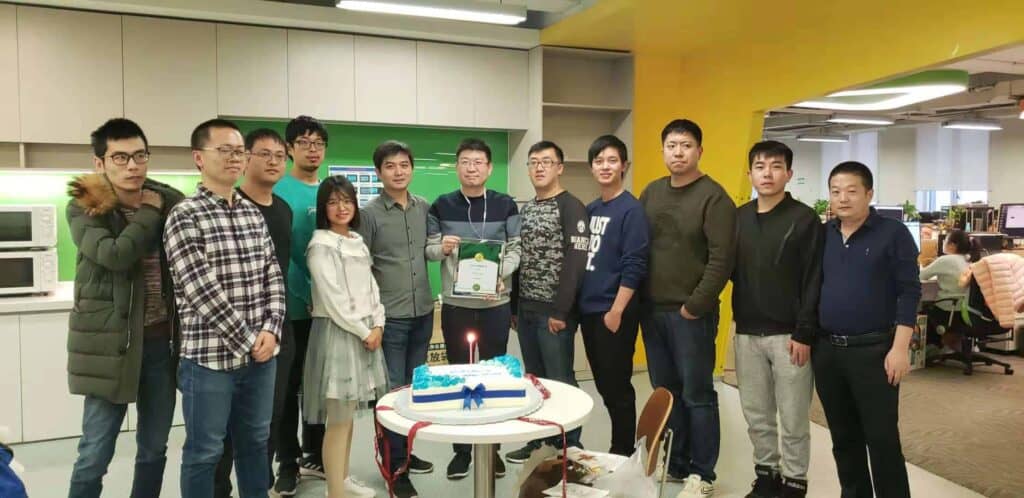
Qihoo 360 Technology’s search for greater efficiency leads to cloud native
Challenge
The search division of the Chinese software giant Qihoo 360 Technology, so.com is the second largest search engine in China, with market share of more than 35%. The company had been using traditional manual operations for deploying environments, and as the number of projects continued to grow, management wanted to improve the utilization ratio of server resources.
Solution
About three years ago, 360 began planning a container cloud service. The company now has a complete PaaS solution, which is built around Kubernetes orchestration, Prometheus monitoring, gRPC, CoreDNS, and Harbor registry, in addition to using Wayne (open source) deploy projects.
Impact
Since switching to containers managed by Kubernetes, the setup time before developers can start writing business-needs code for new projects has been reduced from 2-6 hours to 10-30 minutes. Once the application is deployed in the container cloud environment, the server cost is 55% of the physical machine solution originally used at 360, and 82% of the previous traditional virtualization solution (VPS), while ensuring the same performance and availability. Additionally, a large-scale computer room migration, which had previously taken a week to accomplish, recently was done in just an hour.
By the numbers
Time savings
Setting up environments for development reduced from hours to minutes
Server cost
Now 82% of the previous traditional virtualization solution (VPS)
Large-scale computer room migration used to take a week; now it takes an hour
The search division of the Chinese software giant Qihoo 360 Technology, so.com is the second largest search engine in China, with market share of more than 35%.
The company had been using traditional manual operations for deploying environments, and as the number of applications continued to grow, management wanted to improve the utilization ratio of server resources. “We hoped to solve the efficiency problem of building operating environments for a large number of projects,” says Guo Shaowei, one of the project sponsors of the Search Cloud Platform Group.
So about three years ago, 360 began planning a container cloud system. “We evaluated three orchestration technologies and finally chose Kubernetes because it offered complete and highly integrated functional components,” says Guo, “and we can meet business needs only with a small amount of development work.”


The company now has a complete PaaS solution, which is built around Kubernetes orchestration, Prometheus monitoring, Harbor registry, and Wayne (open source) deploy projects. The platform largely relies on open source components, including the CNCF projects gRPC and CoreDNS, and InfluxDB, Kafka, and Ceph. “We promote container technology primarily in the development and delivery process of the search department, so as to provide business efficiency and service quality,” says Guo.
And in fact, these cloud native technologies have brought greater efficiency. Since switching to containers managed by Kubernetes, the setup time before developers can start writing business-needs code for new projects has been reduced from 2-6 hours to 10-30 minutes. Once the application is deployed in the container cloud environment, the server cost is 55% of the physical machine solution originally used at 360, and 82% of the previous traditional virtualization solution (VPS)—while ensuring the same performance and availability.
“Kubernetes offered complete and highly integrated functional components, and we can meet business needs with only a small amount of development work.”
— GUO SHAOWEI, PROJECT SPONSOR OF THE SEARCH CLOUD PLATFORM GROUP AT QIHOO 360 TECHNOLOGY
Additionally, a large-scale computer room migration, which had previously taken a week to accomplish, recently was done in just an hour. “Our department has undergone two large-scale computer room migrations over the past two years,” says Guo. “In the past, it was very painful for the operators and developers, because they had to work closely together for a week or so to complete the entire migration of the online service. But after containerizing and putting the service into the cloud platform, it takes only an hour or so to complete the migration of the two rooms, which is a great improvement in efficiency.”
It’s still early days for the cloud platform. “We are still promoting the implementation and business application of FaaS, with 10-20% of the business expected to be migrated to the platform,” says Guo.
“After containerizing and putting the service into our cloud platform, it takes only an hour or so to complete the migration of two computer rooms, which is a great improvement in efficiency.”
— GUO SHAOWEI, PROJECT SPONSOR OF THE SEARCH CLOUD PLATFORM GROUP AT QIHOO 360 TECHNOLOGY
At last, the company has open source its platform projects Wayne based on Kubernetes for enterprise management needs. The team is also more than happy to share its experience and advice with other organizations that want to go down the cloud native path. “For startups or companies with less technical strength, I think that choosing a mature open source solution will enable the company to focus on business needs and avoid investing too much resources early in the development of the basic platform,” says Guo. Ultimately, the effort is well worth it. For 360, “the business efficiency was greatly improved.”
